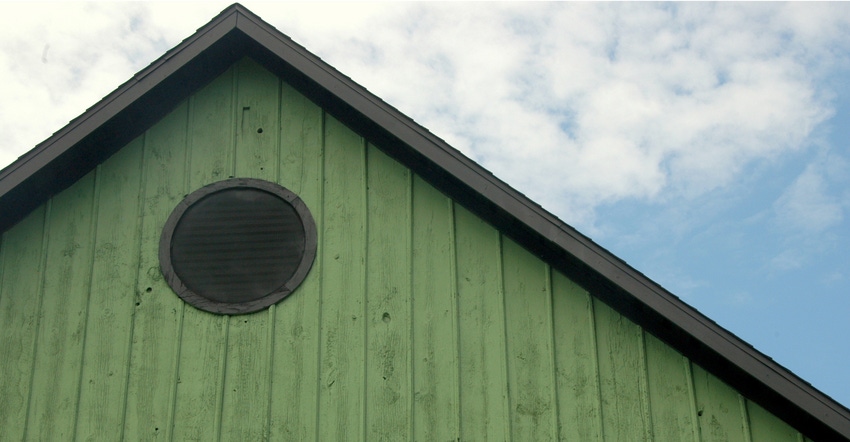March 21, 2019

The Wall Street Journal headline this winter was pretty clear: “Farm Belt Bankruptcies Are Soaring.”
Soaring. Wow. Really?
Authors based that conclusion on federal data that showed the number of U.S. farmers filing for Chapter 12 bankruptcy protection was the highest it had been in a decade. From 2008 to 2018, filings doubled in the 7th Circuit Court of Appeals, which includes Illinois, Indiana and Wisconsin.
The authors coupled those bankruptcy numbers with the trade war and years of low commodity prices, and hammered the nail in our proverbial farm coffin. Certainly, federal data give solid and damning numbers, but not necessarily indicative of what we see as we look around the Illinois countryside.
What’s really going on? I called Dwight Raab, who’s the head of Illinois FBFM and who, based on his interactions with 65 FBFM field staff and more than 5,500 FBFM record books, typically has his finger on the pulse of the Illinois farm financial situation.
“There’s some financial stress out there, no doubt,” Raab says. But soaring bankruptcies? In Illinois? He was less inclined to apply that word.
“Are they up some? Yes. Do they matter for folks going through them? Absolutely. Is it a big upswing? Not really,” he says.
Breaking down the numbers, it’s clear the distress in the dairy sector is a big contributor. Remember, Wisconsin is one of the three states in the aforementioned 7th Circuit. That state alone posted 47 Chapter 12 bankruptcies in 2018 — 18% more than in 2016. The Federal Reserve Bank of Minneapolis also reported more Chapter 12 farm bankruptcies in 2018, acknowledging they “appear to be higher among dairy farms.”
Down home
I also looked around. What we see in the countryside is a smattering of sales here and there. On the surface, they look like someone approaching retirement who decided to get out. Talk to a family member and you learn that they weren’t forced to sell, but if they’d stayed in a couple more years, they might have been.
Others aren’t bankruptcies but sales of key assets, sold in hopes of buoying the rest of the farm, under pressure from high cash rents.
Raab doesn’t think 2019’s prospects are dismal. At this point last year, he never dreamed 2018 would turn out as well as it did. Thank market facilitation payments for that, plus overall higher yields and some marketing gains that carried over from 2017, when crop was sold for a little more in early ’18 than we thought it was worth in late ’17. Technically, that’s a credit to the 2017 crop, but it showed up on 2018 income statements.
Market facilitation payments for soybeans alone added $1.65 a bushel. If you raised a thousand acres of 60-bushel soybeans, that’s a payment of nearly $100,000 — and many farmers had better bean yields than that in 2018.
What to watch
But what about debt — since that’s usually how we get in over our heads? Raab says the five-year trend among FBFM cooperators (who admittedly lean fiscally conservative), shows that only one out of the last 20 years have farmers paid back more principal than they’ve borrowed.
“That means debt is growing on us,” he says. But it’s not necessarily reason to furrow your brow.
Two big trends are contributing to bigger farm debt. The first is farm size. Bigger farms mean you need more operating money. The second is a move to cash rent. For the past 25 years, lease trends have headed toward more cash rent and less crop share. That means you’re buying your inputs and your landlord’s inputs, and you’re paying cash rent on top of that. Upshot? More borrowing.
“We’re talking about millions of dollars in operating debt because that’s what it takes to operate now,” Raab says.
Raab has long described debt-to-asset ratios as being like an aircraft carrier: slow to turn. Debts divided by assets shows what you owe your lender. Or in other words, it shows how much of your business your lender owns and how much you own. And lenders don’t like to be in a situation where they own more than you do.
Further good (and possibly surprising) news? Raab’s FBFM numbers show short-term debt (machinery or livestock) has remained relatively low.
This is all to say, Illinois farms are not going out of business at a “soaring” rate, and it’s not all doom and gloom. 2018 was better than we thought it might be. Watch debt loads, watch debt-to-asset ratios, farm carefully. 2019 may just be better than we think, too.
Comments? Email [email protected].
You May Also Like




